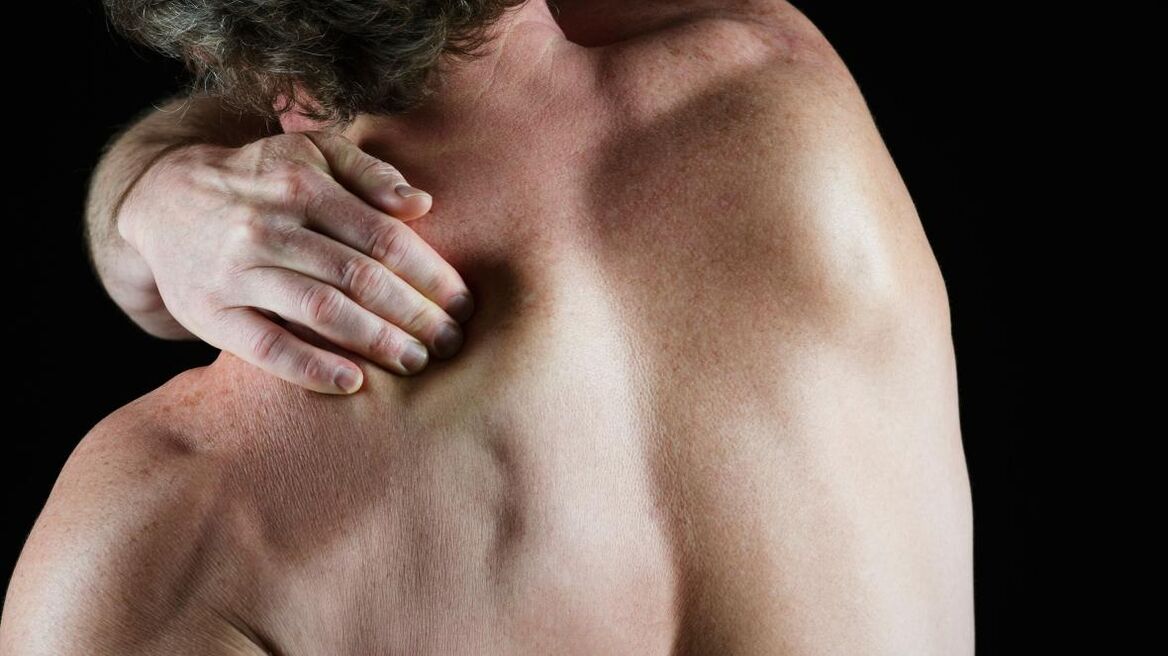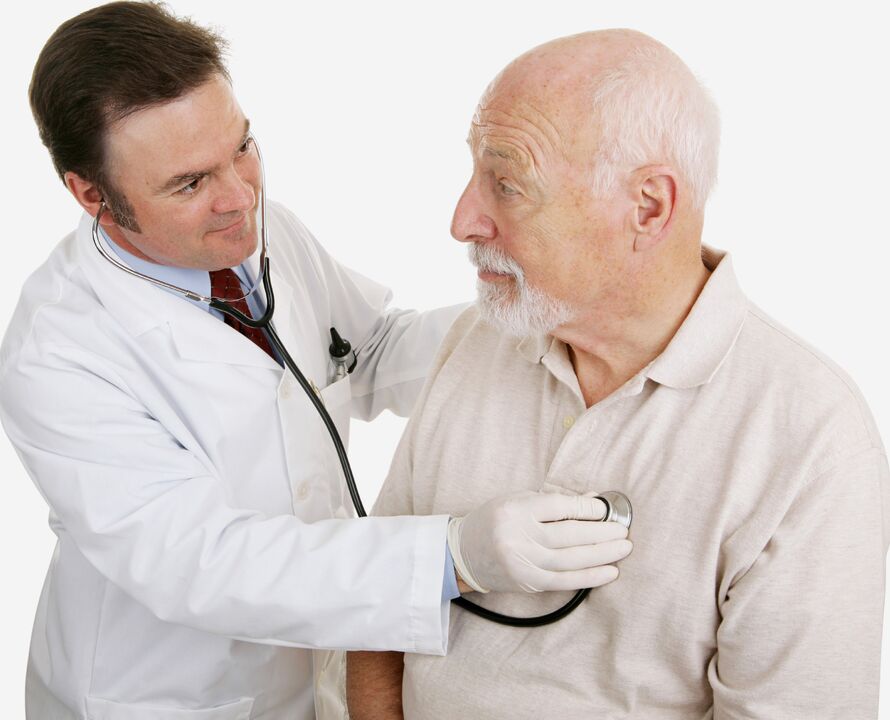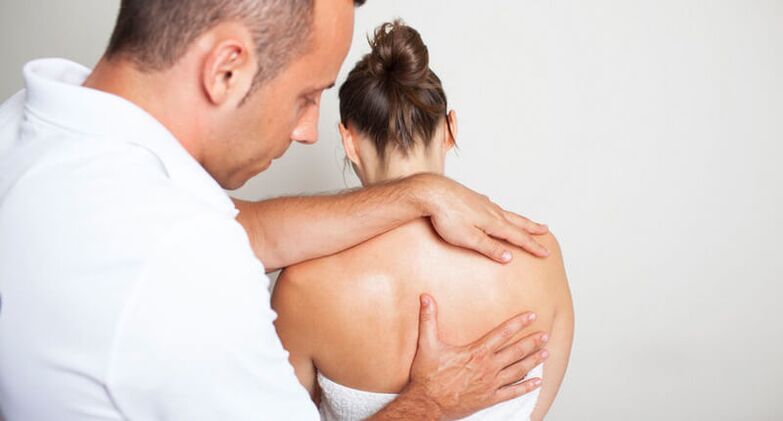
Pain under the left shoulder blade from behind from behind occurs in all age groups of the population, both in young children and in the elderly.
This fact is due to a variety of reasons that cause negative sensations, from a long stay in an uncomfortable position for the body to severe pathologies in the body.
A little anatomy
The shoulder blade is a flat, triangular bone, which is adjacent to the thorax from the rear in the region of the second to seventh rib. Performs binding, protective, strengthening and motor functions.
The shoulder blade connects the belt of the upper limbs to the arms and sternum. It protects the shoulder joint, protects the lungs and the aorta from mechanical stress. Certain muscles that extend from the shoulder blades are designed to strengthen and support the shoulder joints. Thanks to these skeletal parts, the mobility of the shoulder girdle is guaranteed, the functions of which extend to the lower limbs. The bone is supplied with nerve roots that extend from the cervicothoracic region.
classification
The underlying causes of pain in the left shoulder blades vary widely. Painful sensations can be;
- Pain;
- like dull pains;
- with increased intensity;
- hard when gasping for air;
- draw;
- Combustion;
- permanent, not over;
- prick (humbago);
- oppressive;
- pulsating;
- Period.
Important! Often the cause of pain is the prolonged presence of the body in an uncomfortable position and muscle stretching due to physical exertion. They go away on their own and usually don't require medical intervention.
Long-term pain syndrome, as well as its systematic character, require the consultation of a specialist. Acute pain in the area of the left shoulder blade requires urgent medical attention, since the factor does not exclude the manifestation of angina pectoris, exacerbation of gastric ulcers, activation of inflammatory processes in the pancreas.
Pain that affects the lower part of the left shoulder blade from behind is often the result of injuries, diseases of the musculoskeletal system and diseases of the internal organs.
Musculoskeletal system
Musculoskeletal pathologies are provoked by various injuries:
- Breaks and tears from bumps, falls, traffic accidents, etc. Aching pain increases when a person makes movements. In addition, the damaged area swells, bruises appear, mobility decreases;
- Dislocations which are observed in rare cases and occur with a sharp jerk to the arm or a blow to the shoulder blade. In this case, the bone rotates, shifts, takes an abnormal position. Its lower edge is compressed between the ribs.
The muscles connecting the scapula and spine become overloaded, causing stretching with possible rupture.
Trauma-related pain in the area of the left shoulder blade on the back occurs immediately after the injury and only disappears when the patient recovers.
In addition to injuries, pain in the area of the shoulder blade from behind is often caused by diseases of the musculoskeletal system.
The pain syndrome under the shoulder blade, which is a consequence of cervical osteochondrosis (dystrophic-degenerative processes in the intervertebral discs of the spine), is spontaneous, can be painful and pulling. Increased pain is observed when a person remains in a sitting position for a long time and during physical exertion. Taking medication does not bring relief.
A pinched, inflamed intercostal nerve becomes the cause of excruciating pain in the sternum, in the area where it runs. The syndrome is exacerbated during a person's movement, when they cough, sneeze, take deep breaths, change their body position. Permanent or paroxysmal pain syndrome has a sharp, strong, shooting character. Sometimes pain manifests itself in the heart area, lower back, and is reflected in the neck and arms. It can also affect the shoulder blade.

The manifestations of intercostal neuralgia are similar to those caused by heart problems, cholecystitis, angina, pleurisy. Only a qualified professional can make a correct diagnosis.
With inflammation of the tendon of the shoulder and the capsule of the shoulder joint without direct damage to the joint and cartilage (periarthritis), pain affects the shoulder joint, sometimes the area between the shoulder blades and the bone itself. They differ in sharpness and amplification at night. The disease is accompanied by a slight swelling of the shoulder, an increased temperature within 37-37, 4 ° C, a restriction in circular movements of the shoulder. The pathology is widespread and is diagnosed as a result of injuries, bruises and increased load on the shoulder joint.
When the neck muscles are inflamed (myositis), caused by overexertion or infection, severe pain affects the entire cervical spine and radiates to the shoulder blades, the occipital region and the arms.
Muscle pain in the area of the shoulder blade is manifested by physical stress or impacts on the bone.
Pain in a malignant lesion of the bone structure or soft tissue is related to the first manifestation of the disease. Initially, they do not differ in their intensity and occur regularly, which makes timely diagnosis difficult. The development of pathological processes leads to an increase in the severity of negative sensations that haunt a person even at rest, mainly at night. Are not eliminated by non-narcotic analgesics. In addition, the bone is deformed, the surrounding tissue swells, the skin over the malignant focus changes, fractures occur that are not associated with injuries.
In the case of an inflammatory process in the bones (osteomyelitis) caused by streptococci, staphylococci, salmonella, and other infectious agents, the patient is exposed to high temperatures, chills and increased heart rate. There are complaints of back pain in the shoulder blade and muscular area that subsides when the abscess opens.
Consider! Painful manifestations below or above the left shoulder blade and in the area of the bone are inherent in congenital abnormalities. These include aplasia (lack of organs), hypoplasia (insufficient bone development), scapula pterygoideus, Sprengel's disease. At the same time, a person often suffers from a cosmetic defect and limited physical activity.
Herniated discs and bulging of the cervical spinal discs lead to compression of the nerve roots by bone formations, which causes pain when moving, especially when the head is tilted.
Heart and blood vessels
Back pain below the left shoulder blade is often the result of cardiovascular problems.
Chest pain in the middle or to the left extending to the upper body signals a myocardial infarction. At the same time, there may be a strong burning sensation under the left shoulder blade from behind. A clear characterization of the pain syndrome is not possible. It can be painful or manifest in an acute form.
Insufficient blood supply to the myocardium results in an attack of angina pectoris, which is characterized by pressing or sore chest pain, often radiating to the left shoulder blade, arm, and lower jaw. In this case, blood pressure may rise, sweat and paleness may appear.

Angina attacks usually occur in stressful situations or during increased physical exertion. They are stopped by nitroglycerin. If the duration of the pain syndrome exceeds 20 minutes or the drugs do not provide relief, then myocardial infarction is suspected.
High blood pressure or atherosclerotic lesions result in an aneurysm (enlargement) or aortic dissection (incomplete rupture or tear of the endothelium, followed by blood spreading between the layers of the vessel walls).
Small aneurysms do not manifest in any way. When they gain weight, the person begins to feel a dull ache in the back. An exfoliating aneurysm is characterized by a pronounced clinical picture. With a tear, the painful feeling is sharp and short-term. It affects the chest and back, causing a knee-jerk drop in blood pressure and fainting. After a while, a person feels a burning pain in the chest, arms, neck, under the left shoulder blade. The syndrome cannot be eliminated with the help of the available drugs. In such a condition, a fatal outcome is very likely, so urgent medical attention is required.
Pain under the left shoulder blade is caused by:
- Ischemia - a lack of blood supply to the heart;
- Pericarditis - inflammatory processes in the pericardium;
- Endocarditis - an inflammatory disease of the lining of the heart;
- Myocarditis - inflammation of the heart muscle.
Disorders of the autonomic nervous system cause vegetative dystonia. The disease is characterized by numerous manifestations, including a pain syndrome under the left shoulder blade, similar to the heart. In addition, a person suffers from irritability, memory problems, increased sweating, etc.
Respiratory system
Painful sensations under the left shoulder blade are not excluded in diseases of the respiratory tract.
Left-sided pneumonia causes mild chest pain or under the left shoulder blade - a dull, aching character that worsens with movement or deep breathing. Concomitant symptoms are a rise in temperature to critical levels, shortness of breath, shortness of breath and more.
With the formation of necrotic cavities in the left lungs, accompanied by inflammatory processes and the formation of pus, a pain syndrome in the chest area is observed, in some cases with irradiation of the shoulder blade. The pathology is accompanied by cough with purulent sputum, shortness of breath and lack of air when breathing.
The diagnosis of left-sided pleurisy (accumulation of fluid in the pleural cavity) is made based on the following symptoms: acute chest pain, sometimes radiating below the shoulder blade, fever, shortness of breath, dry cough, and other manifestations.
Important! Almost all diseases of the respiratory tract that are accompanied by pain are characterized by a cough of a different nature.
The onset of pain under the left shoulder blade is also possible due to acute bronchitis, tracheitis, or tracheobronchitis.
Gastrointestinal tract
Pain in the left shoulder blade area is often inherent in diseases of the gastrointestinal tract and requires urgent medical intervention.
Paroxysmal pain is characteristic of ulcerative lesions of the stomach and duodenum. It causes prolonged hunger. They can appear immediately after a meal or later.
Perforated ulcers cause acute excruciating pain, accompanied by fever, nausea, vomiting, etc. If no assistance is provided to the patient within 12 hours of the onset of the disease, acute poisoning will result and may result in death of the patient.
Acute inflammation of the pancreas causes pain in the upper, middle, or left abdominal area. In some cases, they give off under the shoulder blade. Pathology causes nausea, vomiting, gas and other digestive disorders.
Some injuries lead to a ruptured spleen. This does not cause immediate internal bleeding, but causes a dull pain under the left shoulder blade. In such cases, delaying treatment could cost the patient life.
In addition, esophageal spasm, calcular cholecystitis, gastroegophagitis, and reflux can cause pain in the left shoulder blade.
Diagnostic methods, treatment
In any case, the specialist asks the patient about the accompanying symptoms, palpates the painful area, determines the blood pressure and the stability of the heart rate in order to rule out pathological processes that require urgent action.

Self-diagnosis is strictly prohibited. If the back hurts over a longer period of time for no reason, it is necessary to consult a therapist who will determine the need for a special diagnosis based on the general clinical picture.
An accurate determination of the causes of the pathology is made with:
- general and biochemical blood tests;
- Urine analysis;
- X-rays for possible problems with the musculoskeletal system and respiratory system;
- Electrocardiograms to rule out heart disease;
- Computed tomography and magnetic resonance imaging with insufficient data obtained by radiography;
- Fibrogastroduodenoscopy in suspected gastrointestinal disorders.
Depending on these diagnostic measures, the therapist will determine why the pain is manifesting and then refer to a doctor with a narrow profile (traumatologist, vertebrologist, cardiologist, gastroenterologist, or neuropathologist) who will determine the treatment regimen.
Important! If there is pain below the left shoulder blade, analgesics only weaken the syndrome and often prevent a reliable diagnosis. Pain medication should only be prescribed by a specialist as part of comprehensive treatment.
There is no universal cure for left shoulder blade pain. As the patient recovers, the negative symptom will gradually go away. The therapy is aimed at eliminating the underlying disease and includes various methods.
To avoid pain in the area of the shoulder blades, you should take care of your health and immediately consult a specialist if any negative symptom appears.






























